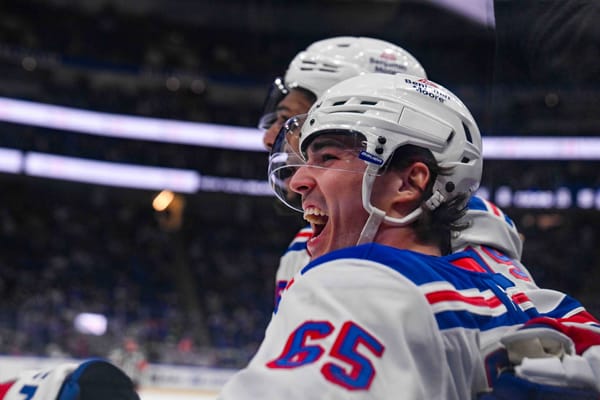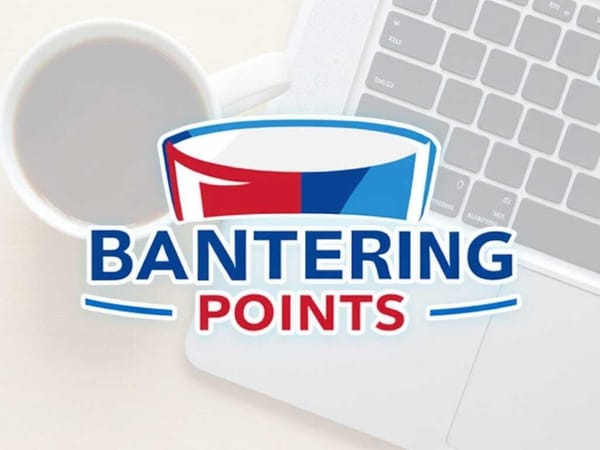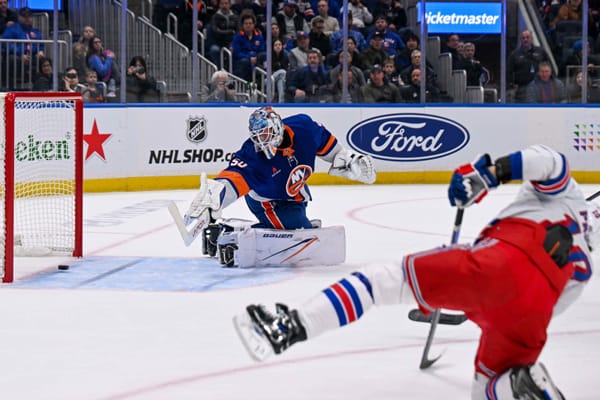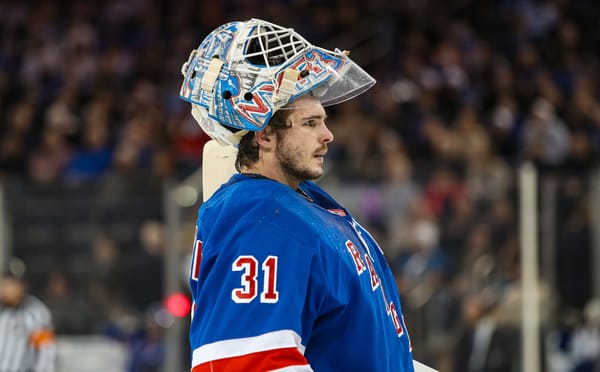The Difference Between Trading Zibanejad And Hayes
In the year of evaluations and decisions, none seems to be getting more play than the upcoming (potential) trade of Kevin Hayes. One a one-year deal that expires into UFA status this summer, Hayes is the prototypical risk of “losing for nothing” if he’s not traded and not extended.
In recent weeks, Hayes has grown into the player we all expected him to become once he was removed from the two-way center role he was shackled to the past two years. After a sluggish start, Hayes now has 21 points in 30 games and has been an impact player for the Rangers in all three zones. This play has not gone unnoticed, and has brought about a new wave of “well, if we have to trade someone maybe it should be Mika Zibanejad instead.”
Related
New York Rangers Should Test Market of Mika Zibanejad
That would be a huge mistake.
Let’s start here: The Rangers can’t keep both Hayes and Zibanejad long term. With Filip Chytil and Brett Howden fighting for time in the top six at center, and Lias Andersson having a season for education on the fourth line, there’s not enough room for two long term veteran centers. While Hayes (26) and Zibanejad (25) are certainly not old, they are blocking the road down the middle for the kids.
Hayes will be 27 when the season ends, meaning his next extension will bring him to his 33rd birthday for a six-year deal, or his 35th if the Rangers extend him to a max contract of eight years only they can offer. (All players who reach UFA status can only be offered a seven-year deal on the open market.) While they would be getting the back-end of Hayes’ prime on such a deal, the team’s expected trajectory to contention is probably two years away at best, which would put Hayes at 29.
But even so, let’s put the age factor aside and move to the bigger issue with Hayes: the money. Right now Hayes is making $5.175-million, a total far lower than what he’s going to get on the open market. Unless Hayes has a very specific destination in mind, I can’t imagine he would walk away from the July free agency period (where he would be a crown jewel) with less than $6.5-million per year on a long-term contract.
And there, my friends, is the difference.
Zibanejad is in the second year of a five-year extension worth $5.35-million per year. Based on his current production, Zibanejad’s contract is a damn fine one at worst, and an outright steal at best. On pace for a 71-point season, Zibanejad continues to be a driving force of the team’s offense and is having a solid year (comparable to the team average) in terms of underlying metrics.
Here Hayes has a distinct edge so far this year, but it’s not wrong to say both players have been quality assets for the Rangers, and both would be dearly missed.
But back to the contract issue: One of these players is signed, and the other has yet to be signed. According to Elliotte Friedman, teams like the Bruins and Avalanche are keeping very close tabs on Hayes, and Winnipeg appears to be circling the wagons as well. If Hayes were to be officially dangled it would not surprise anyone for a bidding war to start. He’s a big body, skilled in all three zones, and can legitimate be the “missing piece” to a contender that needs to add a top-six center. And being that the market should be hot, Hayes should bring back a sizable return.
Zibanejad’s current deal runs until he’s 28, and that’s a factor here as well. There’s also his history with concussions, and that’s a risk that should be considered as well. As we all get into the discussion of keeping a guy like Chris Kreider, or even Mats Zuccarello, the hard work has been done with Zibanejad already.
If Gorton was going to move one — and it makes sense for him to do so — it needs to be Hayes. And if can get a bidding war going early then even better.
All stats prior to Friday’s game vs. Arizona Coyotes.





